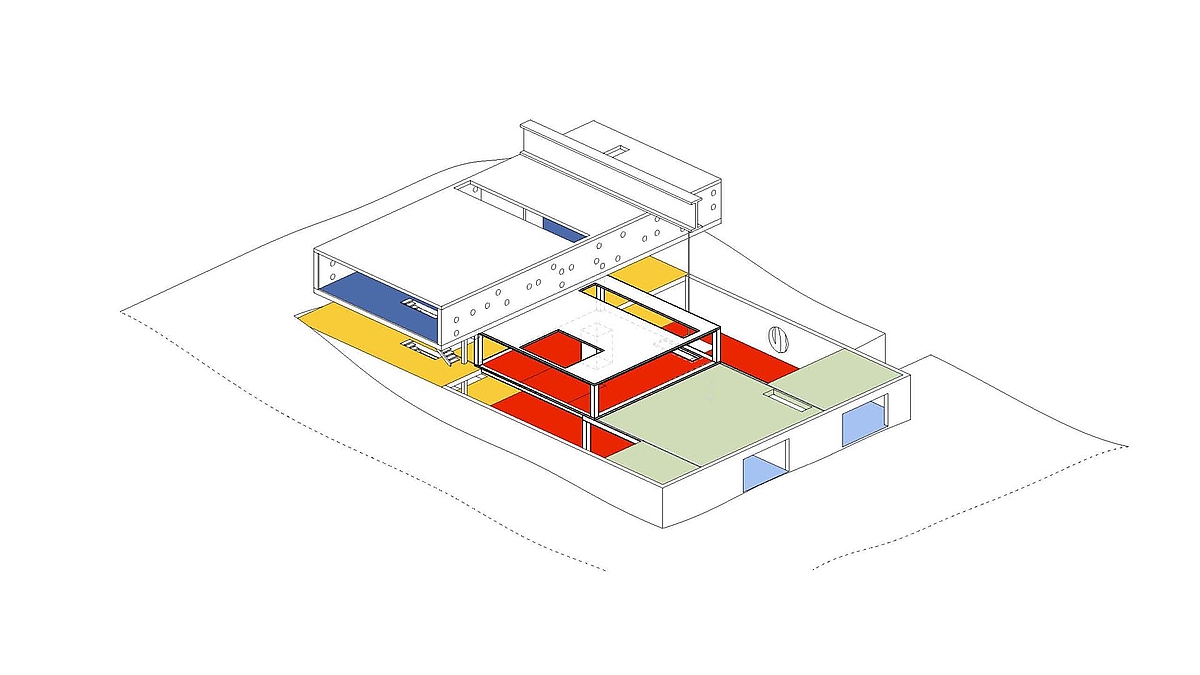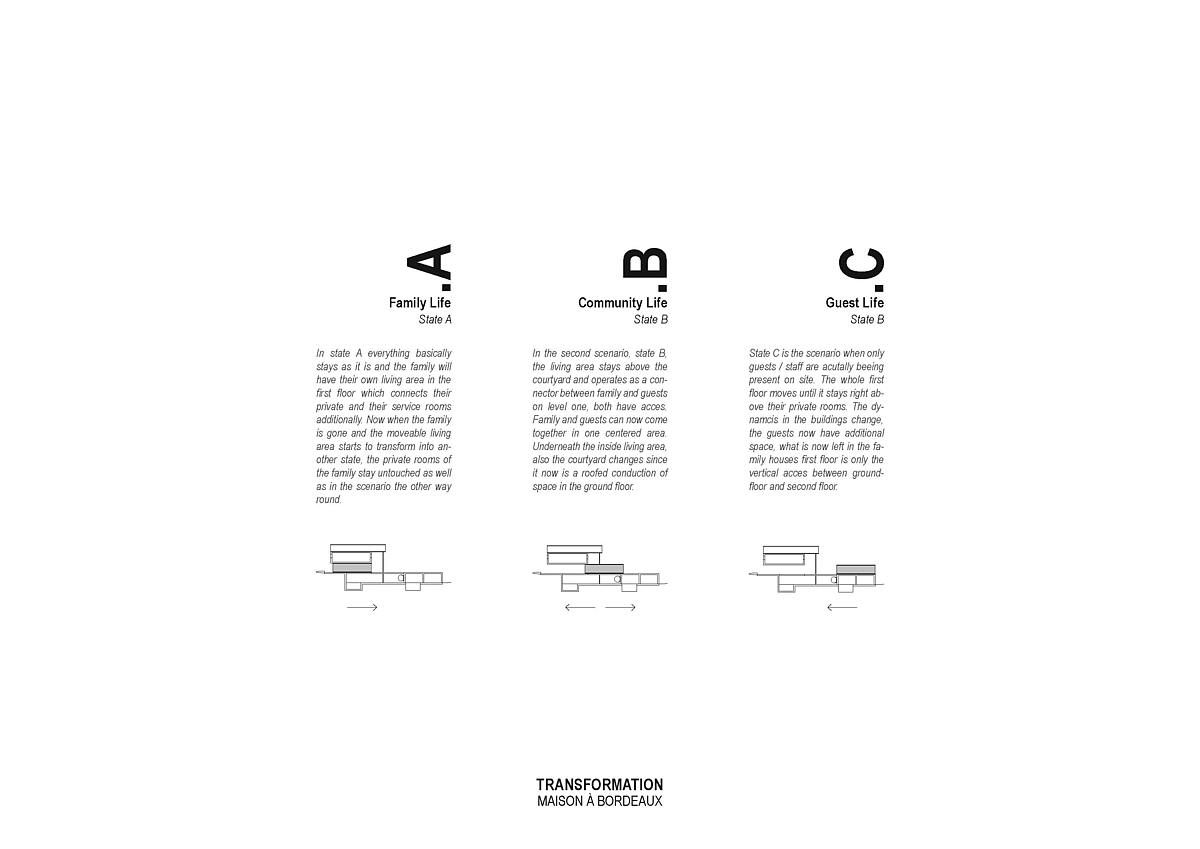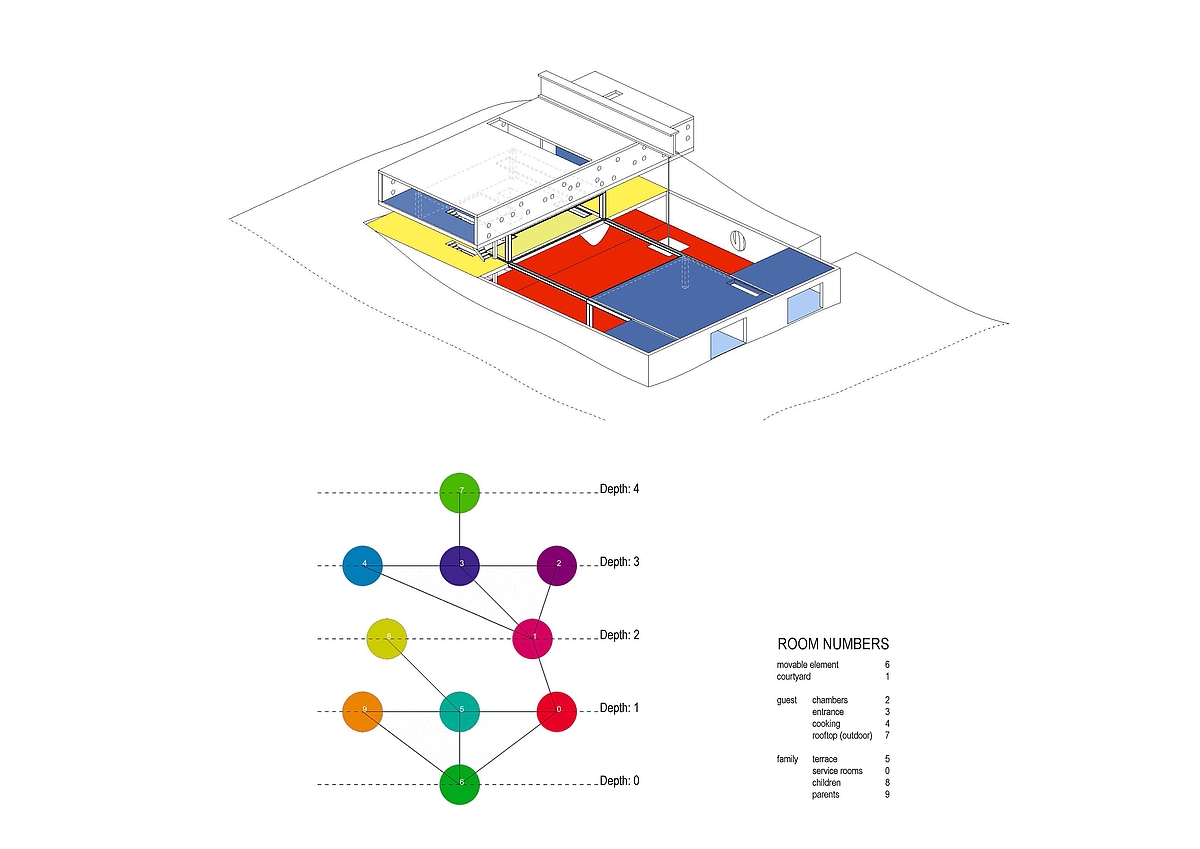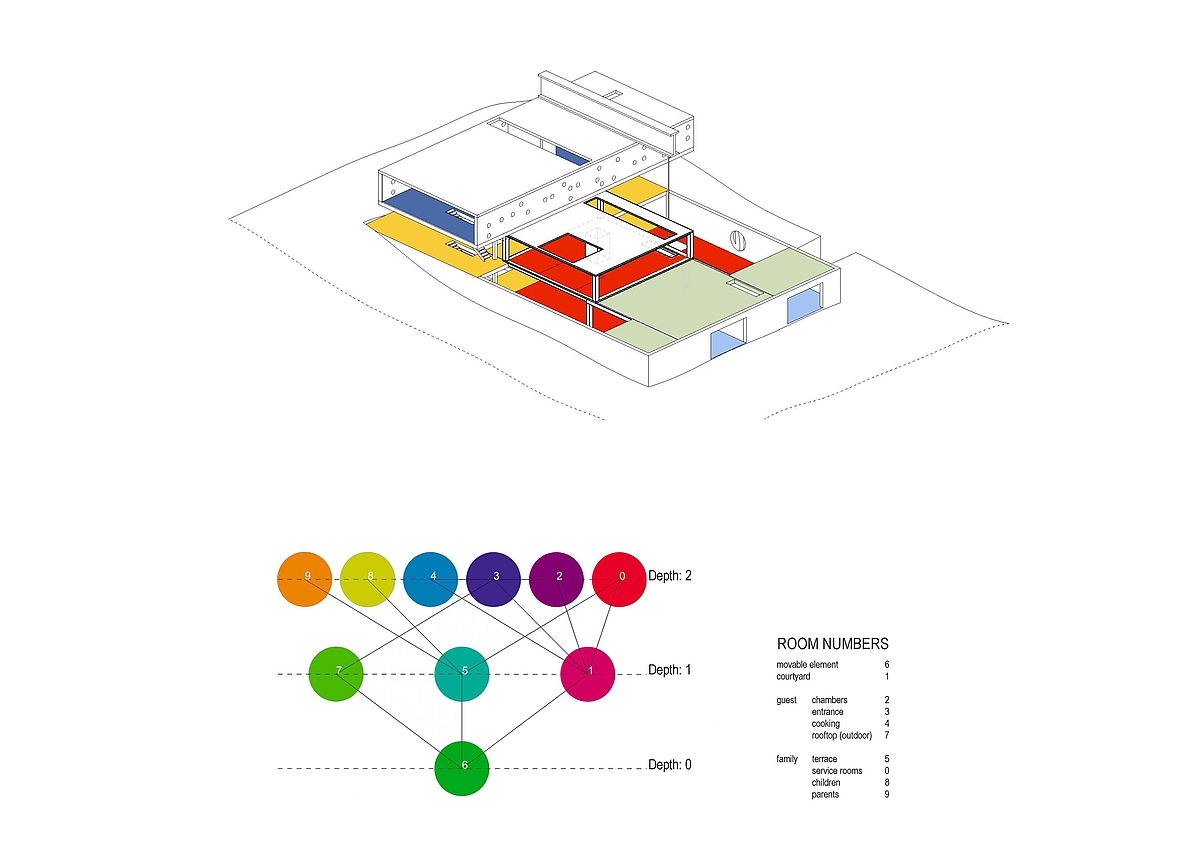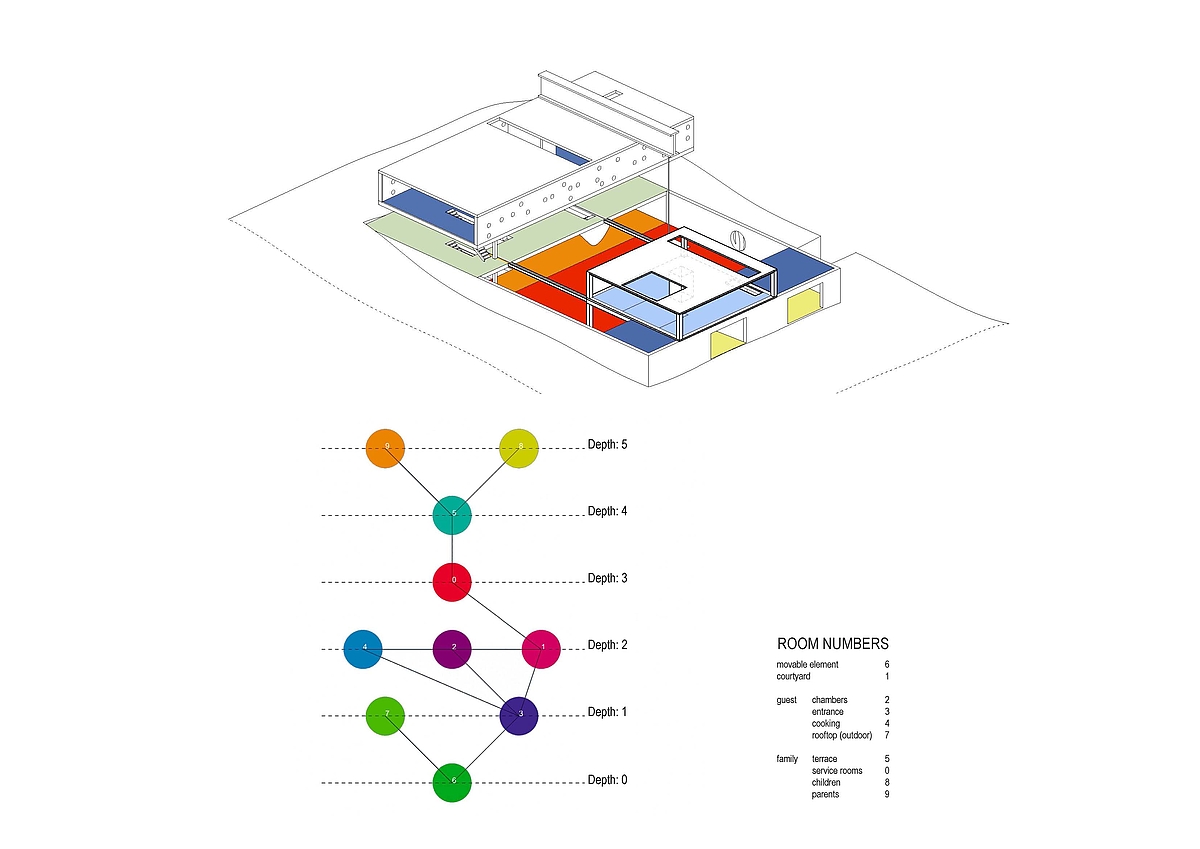Der Grundriss als dynamisch, transformierbares Gebilde, das aus einer Serie von beweglichen Bauelementen die Grundstruktur des Gebäudes ändert.
Projekt
The „Maison a Bordeaux“, built by OMA in 1996, is a residential building situated on a hill outside of Bordeaux. It is designed for the couple Lemoine and their kids. The family life takes place in three floors, which are basically three different houses and therefore also different living environments on top of each other, linked with several stairs and a big elevator platform moving in between. The ground floor is carved into the hill. This is where you find all the more functional rooms. The first floor is the main living area which is a totally open space only framed by glass elements. It makes the upper floor with the private rooms for parents and children appear like its floating in the air. Staff members or guests have their own space in a separated one-storey-high apartment which is connected to the family house by the court yard in between. The whole site is wrapped by surrounding walls that again express a clear definition of private and public space.
It is very clear to see that the focus giving by design lays on the three storeys of the family house, especially with the entirely open first floor, where the main family life takes place. But what if you are able to change the focus by moving the community life and its architectural space? The point of giving an own space to staff and guests also seemed to be important already in the designing process. But they don’t really have a big open community space which will make a “living together“ much more communicative, except from the courtyard. Since the Maison Bordeaux is a residential building only to the family Lemoine, there are a lot of days and weeks passing without them being there. Meaning the house itself will not be in use. Instead it might be an opportunity to rent the whole site to guests or at least make the social life of the staff members more livable. Functional rooms for guest as well as the chambers are already given by the designers. The concept now is to reimagine the living area of the family in the first floor more to a shared living space for both, family and guests. By designing it as a moveable storey it can react to all different scenarios, being a living room for the family or the guests or even both. That will optimize the use of the house and also rethink the opportunities for social life within the building. The advantage is, when the family is gone and the guest are the only ones in use of the moveable living area, the private rooms of the family stay untouched as well as in the scenario the other way around. What you will now have are three different states of living dependent on the position of the first floor, the living area itself. State A: family life, state B: community life, state C: guest life. In state A everything basically stays as it is and the family will have their own living area. State C is the scenario when only guests / staff are actually being present on site. The whole first floor moves until it stays right above their private rooms. The dynamics in the buildings change, the guests now have additional space, what is now left in the family houses first floor is only the vertical access between groundfloor and second floor. In the third scenario, state B, the living area stays above the courtyard and operates as a connector between family and guests on level one, both have access. Underneath the inside living area, also the courtyard changes since it now is a roofed conduction of space in the ground floor.
The basic idea now to change the way of life in the maison bordeaux as described without touching any of the fundamental structural elements is very simple. It is just about moving almost the whole living area /as it exists) situated in the first floor of the building which seems to be totally detached from the rest of the house anyway. Moving the first floor, which is after the adaption basically consisting of two slabs, a structural core in the middle and four glass elements defining the actual inside space, will give new possibilities for the three different states of living together. Necessary for an easy switch between all three different positions of the moving floor are some structural changes. First thing to do is to entirely separate the room defining elements of the first floor from the rest of the house so that it can move freely anytime. It will now be an independent box connecting the family house vertically and then by moving on prepared tracks connecting the whole site also horizontally. Next structural change will be necessary for the vertical movement inside the houses. In the main house, due to the chosen borders for the moveable element, the existing vertical access is not affected by the movement. Different to that, the guest apartments don’t have any stairs so far. That’s why you need to install a staircase and also a cutout in the ceiling on the exact same spot as in the first floor so that the access to the living area is absolutely smooth. If you don’t need the staircase, the cutout turns into a roof light again. The stair itself will have the function of a room defining element with some storage space underneath so that you won’t even realize it as a stair when it’s not in use for getting up in the living area. For state B you don’t need any structural changes. The living area, now community space can be reached from both sides, the family house as well as the guest apartments, to create an environment for community life.

